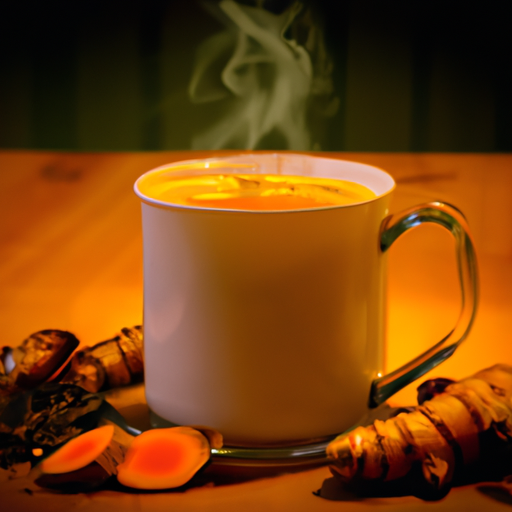As someone who has experienced the loss of a loved one, I understand the challenges of dealing with the sorrow and yearning that accompany their absence. Yet, there are times when we may sense their spirit near us, especially in our dreams.
Dreams are a powerful and mysterious aspect of our consciousness, and it’s not uncommon to dream about those we have lost. In fact, some people believe that dreams can be a way for our deceased loved ones to communicate with us.
In this article, I will share some ways to recognize when a deceased loved one visits us in our dreams, and how to find comfort and meaning in these experiences.
When we dream of someone who has passed away, it can be a deeply emotional experience. It may feel like they are right there with us, and we may wake up feeling a sense of connection or peace. These dreams can be vivid, realistic, and even feel like we are having a conversation with our loved one.
While some may dismiss these dreams as mere coincidences or our subconscious mind processing our grief, others believe that they are a form of communication from beyond the physical realm. Whatever your beliefs may be, understanding the possible signs and messages that our loved ones may be sending us through our dreams can bring comfort and healing during a difficult time.
Key Takeaways
- Dreams can be a powerful way to communicate with deceased loved ones and receive messages from them.
- Symbolism and intuition play a significant role in interpreting these messages, and keeping a dream journal can help with understanding recurring symbols and numbers.
- Trusting one’s instincts and not dismissing dreams is important, as is seeking guidance from a therapist or spiritual advisor.
- Dreams of deceased loved ones can provide comfort and healing, but coping with grief and loss is a gradual process and may involve creating memorials or giving back to the community in honor of the loved one.
Vivid and Realistic Dreams
You may know that your deceased loved one is visiting you in your dreams if you experience vivid and realistic dreams that feel like they’re actually happening. These dreams often have a powerful emotional impact on you, leaving you feeling deeply moved and connected to your loved one. You may find that you wake up feeling as though you’ve just spent time with them and that the dream has left a lasting impression on you.
One way to know if your dream is a visitation from your loved one is by interpreting the symbolism that appears in the dream. For example, if you dream about a specific place or object that holds significance to your loved one, it could be a sign that they’re trying to communicate with you. Similarly, if you dream about your loved one in a particular way, such as them appearing younger or healthier than they were before they passed, it could be a sign that they’re at peace and happy in the afterlife.
Overall, experiencing vivid and realistic dreams of your loved one can be a powerful way to feel their presence and connect with them after they’ve passed. However, it’s important to remember that not all dreams are visitations and that it’s important to listen to your intuition and trust your instincts.
In the next section, we’ll explore other ways to sense the presence of a loved one in your life.
Sensing the Presence of a Loved One
As a gentle breeze caresses your face in the still of the night, you may feel a comforting presence that brings warmth to your heart. You might not see or hear anything, but you just know that someone you dearly miss is nearby.
Intuitive feelings and unexplained sensations can be signs that a deceased loved one is visiting you in your dreams. Sometimes, you may feel a sudden change in the atmosphere that cannot be explained by the weather or any physical factor. It could be a sudden drop in temperature, a feeling of pressure on your chest, or an inexplicable sense of peace and calm.
These are all possible ways that a loved one can let you know that they are with you, even if you cannot see them. If you ever experience these sensations or feelings, don’t ignore them.
Take comfort in knowing that your loved one is trying to communicate with you. In the next section, we’ll explore how to recognize the symbolic messages and signs that they might be sending you.
Symbolic Messages and Signs
When we lose a loved one, we often yearn for some form of communication from them. Sometimes, we may receive clear messages from them through signs and symbols that can be easily interpreted.
Other times, their messages may be more symbolic, and we need to search for the underlying meaning in objects or images that appear to us.
And then there are instances when we see repeated numbers or symbols that hold a special significance for us, which could be a sign from our loved ones trying to communicate with us.
It’s important to keep an open mind and heart when receiving these messages, as they can bring comfort and guidance in our healing journey.
Receiving a Clear Message
If a deceased loved one visits in your dreams and delivers a clear message, it may be a sign that they’re trying to communicate with you from beyond.
Receiving a clear message from a loved one who’s passed away can be a profound and emotional experience. Here are some ways to help understand and interpret the message:
- Pay attention to the details of the dream, and try to remember as much as possible.
- Take note of any emotions or feelings that were conveyed during the dream.
- Consider the context of the message and how it relates to your current life situation.
- Reflect on any past conversations or unresolved issues with the loved one.
- Trust your intuition and listen to your inner voice.
By following these steps, you may be able to gain a deeper understanding of the message your loved one’s trying to convey.
The next step is to find meaning in the symbolic objects that may have been present in the dream.
Finding Meaning in Symbolic Objects
Discovering the significance of symbolic objects in a dream can provide insight into the message from the other side. Interpreting symbols can be challenging, yet it’s essential to recognize the meaning behind them.
For instance, a butterfly could symbolize transformation, while a rose could signify love. When you dream of a deceased loved one, the symbolic objects that appear in your dream could be their way of communicating with you.
Keeping a dream journal is an excellent way to document your dreams and their symbols. It’s vital to record as much detail as possible so that you can interpret the symbols later.
When you wake up from a dream with a deceased loved one, take some time to reflect on the symbols that appeared. What do they mean to you? Do they represent something that you and your loved one shared?
By understanding the symbolism, you can gain a deeper understanding of the message they are trying to convey. As you continue to document your dreams and interpret the symbols, you may start to see repeated numbers or symbols in your dreams, which can be another way your deceased loved one communicates with you.
Seeing Repeated Numbers or Symbols
As we discussed in the previous section, objects in our dreams can hold significant meaning. But what about numbers and symbols? Have you ever noticed a repeated number or symbol in your dreams? This could be a sign that your deceased loved one is trying to communicate with you.
Exploring numerology and the spiritual significance of symbols in dreams can help us decipher these messages. One way to interpret these signs is to keep a dream journal. Write down the number or symbol that appears in your dream and any emotions or thoughts that come to mind. Then, research the meaning of that number or symbol in numerology or spiritual contexts.
Here are two ways to interpret repeated numbers or symbols in dreams:
-
Repeatedly seeing the number 11 could mean your loved one is trying to communicate their presence, as it’s often seen as an angel number representing spiritual awakening or transformation.
-
Seeing a butterfly in your dream could represent transformation or rebirth, which could be a sign that your loved one is at peace and wants you to know they have moved on to a new chapter.
By paying attention to these signs and taking the time to interpret them, we can find comfort in knowing that our loved ones are still with us, even after they have passed on.
As we move on to the next section, let’s explore another common way our deceased loved ones visit us in our dreams – recurring dreams.
Recurring Dreams
Whenever I have recurring dreams about a deceased loved one, I can’t help but feel that they’re trying to communicate with me from the other side.
These dreams usually involve the same person and the same themes, and they’re vivid and emotional.
At first, I didn’t know what to make of them, but after doing some research, I realized that they could be a sign that my loved one’s trying to reach out to me.
Interpreting these dreams can be challenging because they’re often symbolic.
Sometimes, the deceased loved one appears in the dream as they were in life, while other times they take on a different form or communicate through a symbol or metaphor.
It’s important to pay attention to the recurring themes and symbols in the dreams and try to decipher their meaning.
For example, if you keep dreaming about your deceased grandmother cooking in the kitchen, it could be a sign that she’s trying to reassure you or remind you of a happy memory you shared together.
If you’re experiencing recurring dreams about a deceased loved one, it’s important to approach them with an open mind and heart.
These dreams can be a powerful way to connect with the afterlife and receive messages from those who’ve passed on.
In the next section, we’ll explore another way that the deceased can communicate with us through shared dreams or experiences.
Shared Dreams or Experiences
Have you ever had a dream that you shared with someone else, only to find out that they had the same dream? It’s a fascinating experience that can leave you feeling connected and validated.
In my personal experience, I’ve had shared dreams with family and friends, where we both had similar experiences in our dreams. It’s a surreal feeling, but it can also be a powerful way to connect with others and validate our experiences.
Family or Friends Experiencing Similar Dreams
You might notice that friends or family members are having similar dreams as you. This could be a sign that your loved one is visiting all of you in your dreams.
It’s common for those who have passed to visit multiple people in their dreams, especially if they had strong connections with those people.
It can be comforting to know that you’re not alone in experiencing these dreams and that others are also receiving messages from your loved one. If you’re experiencing similar dreams with others, consider forming a support group or seeking guidance from a therapist or spiritual advisor.
Sharing your experiences and feelings with others who understand can help you process your emotions and find comfort in knowing that you’re not alone.
It’s important to honor your loved one’s memory and to continue to cherish the connection you shared with them.
As you explore shared memories or experiences in dreams, you may find that these dreams can bring comfort and closure.
Shared Memories or Experiences in Dreams
If you happen to dream about reliving a special moment with someone who’s passed, it can feel like a warm hug from the past, like a cozy fireplace on a cold winter night.
Shared memories or experiences in dreams can be a sign that your deceased loved one is reaching out to you.
These dreams often involve reliving a shared experience or revisiting a place that holds significance to both of you.
Interpreting symbolism in your dreams can be a useful tool in understanding the message your loved one is trying to convey.
Personal interpretation of dreams is unique to each individual and may require some introspection to fully understand.
Trust your intuition and pay attention to any emotions or feelings that arise during the dream.
These shared experiences can bring comfort and closure to those grieving the loss of a loved one.
Understanding the symbolism and personal interpretation of these dreams can provide validation of the connection we have with our loved one, even after they’ve passed, which leads to the next step of validation through communication.
Validation Through Communication
When communicating with those who’ve passed on, it can feel like a soft breeze on a warm summer day, a gentle reminder that they’re still with us. Sometimes, communication with deceased loved ones can occur in dreams, and it’s important to pay attention to the symbols and messages presented.
Interpreting these symbols can give us insight into what our loved ones are trying to tell us. For example, a dream about a deceased loved one holding a key may symbolize seeking closure or unlocking a mystery. It’s essential to trust your intuition and allow yourself to be open to receiving these messages.
Seeking closure is a natural part of the grieving process, and communication with deceased loved ones can help provide that sense of closure. When we receive validation through communication, like hearing our loved one’s voice or receiving a message that only they would know, it can bring a sense of peace and connection.
Waking up with that sense of peace or connection is a sign that our loved ones are still with us and guiding us through our grief journey. By allowing ourselves to be open to these messages and interpreting the symbols presented, we can find comfort and healing in the knowledge that our loved ones are still present in our lives.
Waking Up with a Sense of Peace or Connection
As I wake up from the dream, a warm feeling of calmness spreads through my body, as if a soothing embrace from my loved one has wrapped around me. It’s a comforting feeling that lingers even after I open my eyes.
This sense of peace is a clear sign that my loved one has visited me in my dreams. It’s a beautiful way for them to reach out to me, to let me know that they’re still with me. If you’ve been exploring your intuition and seeking closure after the loss of a loved one, waking up with a sense of peace or connection is a powerful indicator that your loved one has visited you in your dreams.
This is a special experience that can be difficult to put into words, but it’s something that you’ll feel deep in your heart. It’s a beautiful reminder that love transcends time and space, and that our loved ones are always with us, even if they’re no longer physically present.
When you wake up feeling this sense of peace, take a moment to acknowledge the visit and thank your loved one for reaching out to you. This is a powerful way to honor their memory and deepen your connection with them.
Understanding the cultural and spiritual significance of these visits can help you appreciate them even more. So, let’s explore the different ways that different cultures and religions view these visits, and how they can help us find comfort and meaning in our experiences.
Understanding the Cultural and Spiritual Significance
Get ready to delve into the cultural and spiritual significance of these mystical encounters, and how they can offer solace and understanding in the wake of loss. Dream visitations from deceased loved ones are deeply rooted in various cultures and spiritual beliefs. These visitations are often seen as a form of communication from the afterlife, offering comfort and reassurance to the living. It is important to note that cultural variations exist in how these visitations are interpreted and perceived.
Interpreting symbolism is a crucial aspect of understanding dream visitations from deceased loved ones. These symbols can range from specific objects or places to certain actions or gestures. For example, seeing a loved one holding a specific object could represent a message they are trying to convey. It is important to trust your intuition when it comes to interpreting these symbols, as they can hold personal significance that is unique to you and your relationship with the deceased.
In addition to interpreting symbolism, understanding cultural variations in dream visitations is also important. While some cultures see these visitations as positive and comforting, others may view them as negative or even dangerous. It is important to respect these differences and understand that our individual cultural beliefs may shape how we perceive these encounters. Regardless of cultural beliefs, dream visitations can offer a sense of connection and understanding, providing comfort and healing during the grieving process.
Dream visitations from deceased loved ones can hold immense spiritual and cultural significance, offering comfort and understanding during times of loss. Interpreting symbolism and understanding cultural variations can provide deeper insight into these mystical encounters. In the next section, we will explore practical ways to cope with grief and loss, building on the understanding gained from dream visitations.
Coping with Grief and Loss
To cope with grief and loss, you can try finding healthy ways to express your emotions and engage in self-care practices such as exercise or meditation. Have you considered seeking support from a therapist or joining a support group to connect with others who are going through a similar experience?
Dealing with grief can be a complicated and overwhelming process, but it’s important to remember that everyone experiences it differently. Take the time to process your emotions and allow yourself to grieve in your own way.
Moving forward after loss is a gradual process, and it’s okay to take things one day at a time. You may find comfort in creating a memorial or tribute to your loved one, whether it’s a photo album or a special keepsake. You can also try volunteering or donating to a cause that was important to your loved one, as a way to honor their memory and give back to the community.
Remember that healing is not a linear process, and there will be good days and bad days. Be gentle with yourself and don’t be afraid to ask for help when you need it. Whether it’s seeking professional counseling or reaching out to friends and family for support, you don’t have to go through this alone. With time and patience, you can learn to cope with your grief and find peace in the memories of your loved one.
Here are 4 tips for coping with grief and loss:
-
Find healthy ways to express your emotions, such as through journaling or art.
-
Practice self-care by engaging in activities that bring you joy and relaxation.
-
Seek support from a therapist or support group to connect with others who understand what you’re going through.
-
Remember that healing is a gradual process and it’s okay to take things one day at a time.
Frequently Asked Questions
Can deceased loved ones visit us in dreams even if we haven’t experienced any signs or messages?
Yes, it’s possible for deceased loved ones to visit us in dreams without any prior signs or messages. Dream interpretation and spiritual beliefs suggest that dreams are a way for spirits to communicate with us. Trust your intuition and feelings.
How can we differentiate between a regular dream and a visitation dream from a deceased loved one?
I’ve found that by practicing lucid dreaming techniques and journaling my dreams, I can better differentiate between a regular dream and a visitation dream from a deceased loved one. It takes time and patience, but it’s worth it to feel their presence.
Is it possible to communicate with the deceased loved one during the visitation dream?
During a visitation dream, it’s possible to communicate with a deceased loved one through exploring symbolism and finding closure. It’s a special opportunity to connect with them and receive the closure and healing we need.
What should we do if we experience scary or negative dreams about the deceased loved one?
If you experience scary or negative dreams about a deceased loved one, it’s okay to feel overwhelmed. Handling grief can be tough, and seeking professional help can provide support. Remember, you are not alone.
Does the frequency of visitation dreams decrease over time since the passing of a loved one?
I used to have visitation dreams every night after my loved one passed, but over time the frequency decreased. Coping mechanisms like therapy helped me manage the psychological effects of grief and appreciate the occasional dream as a comforting reminder.
Conclusion
Dreaming of a deceased loved one can be a powerful and emotional experience. It can be a way for them to communicate with us, offer comfort, or simply remind us of their presence.
Pay attention to the vivid and realistic nature of the dream, the sense of their presence, and any symbolic messages or signs. Recurring dreams or shared experiences with others can also be a sign of their visit.
Remember that cultural and spiritual beliefs play a role in how we interpret these experiences. Coping with grief and loss is a journey, and dreaming of a loved one can be a way to process and heal.
Embrace these moments, hold onto the sense of peace they bring, and trust that your loved one is always with you in some way.










